Advice for Becoming a Better Public Speaker

There is no shame in feeling nervous when presenting to a group for the first time. Public speaking can be one of the most stressful and terrifying things you can do. However, with a little bit of practice, you will soon be able to speak confidently in front of any audience.
Here for you is best advice for Becoming a Better Public Speaker!
13 Pieces of Advice for Becoming a Better Public Speaker
Cut the Caffeine Limit your coffee intake to no more than one cup three hours before your presentation. Energy drinks and soda will have a similar effect on your nervous system, so make sure you avoid anything that contains caffeine in it for at least six hours prior to speaking. Now let us get on all tips:
#1 Know your material.
There is no better way to overcome your fear of public speaking than to present something you know inside and out. The more prepared you are, the easier it will be to concentrate on what you are saying rather than how you feel about being in front of an audience. To figure out if you know your material well enough, ask to give your presentation before you begin seriously planning it. You will have to know your material cold if you plan to wing it, but that should be an absolute last resort. Make the effort to prepare and it will pay off.
#2 Know your audience.
The more you know about the people who will be listening to you speak, the better prepared you will be to win them over. If your audience has a particular perspective on a subject, find out what it is so that you can weave it into your presentation. If they do not have a particular perspective, figure out who they are and tailor your message to them accordingly.
#3 Know your purpose.
It is helpful to know what you want people to walk away from your presentation thinking about and how it supports the overall goals of the event. If you know your purpose, you will be less worried about the presentation itself.
#4 Cut down on the number of times you practice your presentation.
The more you practice your presentation, the better you will get. When starting out, it may be helpful to give yourself a little leeway in terms of how many times you can memorize it. However, as your confidence in front of an audience grows, you should try to cut down on how often you practice your presentation.
#5 Visualize the speech.
Try to picture yourself delivering your speech as if you were giving it to an audience of one. Try to imagine the best possible outcome–do not worry about the specifics of it. Get a general sense of how your speech will unfold and what you want the audience to think after they have heard it.
#6 Think of your presentation as a conversation.
Public speaking is a conversation. When you are walking out in front of an audience, it is easy to forget that they need your help to understand your message. Rather than thinking of your presentation as a speech, think of it as a conversation that you are having with the audience. They are hearing you out, not just reading your words off of a piece of paper.
#7 Feel the audience's emotions.
Your presentation should make people feel something. If you know your material, make sure you feel it yourself and convey it to the audience. If you know your audience well, you will know what feelings to tap into.
#8 Make eye contact with different people in the audience.
When you are out in front of an audience, try to make eye contact with as many different people as possible. This will help you feel included in the presentation, which will help you feel comfortable delivering it.
#9 Do it for the audience.
The most successful speakers are those who put their hearts into their message. If you want to be a better speaker, focus on what people are going to take away from your presentation and how you can help them do that.
#10 Be authentic.
If you put your heart into your presentations, it will be easier to forget that people are watching you. People will be able to sense when you are putting on a show and it will make them uncomfortable. Be yourself and they will feel more at ease.
#11 Enjoy the moment.
The more fun you have presenting, the more fun your audience will have listening to you. If you enjoy yourself, your audience will enjoy themselves and it will be a positive experience for everyone involved.
#12 Use videos of yourself to improve.
It is helpful to watch videos of yourself speaking to other people. This is a good way to get a better idea of how you are looking in front of an audience and can help you identify any flaws in your presentation. Practice changing your speech based on what happens in the video.
#13 Know how to end your presentation.
Be prepared to say something when you are done. If you do not have anything to say, just start talking. It is better than leaving your audience hanging.
By now you have seen that these are not easy tips. That is okay, everyone has been struggling to walk through these 13 steps and it will take time to overcome the anxiety of public speaking. Also be aware that you will still feel nervous when the presentation is over. However, you will be able to put it all behind you and move forward with your life.
Does body language matters in public speaking?
One of the major points of all these tips is to be confident. You must "own" the room. This means that you must be in control. Some experts say clear your throat and pause after every word. This will make your speech seem more natural. Here is key advice for your body language management during public speaking:
- Stand and sit up straight. Your harness will be more natural since you will feel confident.
- Stand up, sit up straight. This is a good all-round advice, and it will help you to create a natural appearance.
- Put your hands on the table when speaking. That will give a sign to the audience that you mean serious business.
- Maintain eye contact with your audience. Make sure to focus on all the different people in the room and make eye contact with them.
- Make sure to tap your foot and look business like by standing tall, closing your mouth, and looking into the cameras.
- Do not fidget or shake while talking, it will make you appear nervous. It also helps to either wear a suit or at least some nice clothes.
- Look people in the eye, this shows that you are confident and that you are trustworthy. Use your hands while talking, this will help the audience to know what you are talking about easier.
- Be aware of your facial expression. If you smile, this will make you appear more confident, however avoid smiling too much. Some people can look like they are smiling because they are happy, not because they feel confident.
- Use hand gestures a lot, this will add to your public speaking skills. Use them to emphasize important points. This is a form of body language that is mostly unconscious, so it shows that you are confident and in control.
- A major part of your public speaking is your voice itself. It does not matter how good you are at public speaking if you cannot control your voice.
- Not all people speak in a monotonic way. Public speaking is a matter of confidence, it shows that you know what you are talking about.
- This is a wonderful tip. It will help you gain more confidence in your public speaking skills. However, some people cannot control their voice and others cannot control their emotions. -- Your voice will change based on how you feel. One of the best things that you can do to gain more confidence is to practice in front of a mirror. Practice standing up and giving a speech from your point of view.
- Practice giving speeches in front of your friends and family. It will seem awkward at first but eventually you will get used to public speaking. This is a way to be more confident and better at public speaking.
There are several essays on the Internet that are talking about effective ways of public speaking.
Guide to become an efficient public speaker
Public speaking is one of the tasks that each and every person has to deal with at some point of their lives. This is an important skill that can be applied in many different situations in this modern world. It is one of the most important skills that everyone should have in their arsenal.
One of the most important reasons why you should work on your public speaking skills is to feel confident in yourself. It is one of the most important skills that you can use to control the situation when you have to deal with other people in daily life or work.
Here is a step-by-step guide to become an efficient public speaker
#1 Understand the concept
Just like with anything, you have to start from the basics. Public speaking is one of the most important skills that you can have in your arsenal. There are multiple different types of public speaking skills, for example:
- The content of the speech. This is the main topic that you are going to talk about in front of an audience.
- The elements of your speech. Also known as your delivery or style. This is the way in which you will speak to your audience.
- The format of your speech. This is how your speech will be structured and how you are going to move through the different elements of your speech.
#2 Create a strategy
Before you begin working on your public speaking skills, you should have the right strategy. In order to create a strategy, you need to know what your goal is. It is important to start from the basics and work on your core values.
#3 Learn to analyze different elements of your speech
The first thing that you have to learn is how to understand the different components of your speech. You also need to understand how each, and every element affects other elements of the speech. For example, the content will be affected by the voice.
#4 Create a comfort zone
It is very important to create a sense of security in front of an audience. This can be done by creating your own comfort zone and things that make you feel relaxed.
#5 Learn to control your voice
One of the most important factors in public speaking is the ability to control your voice. Everything that you say has an impact on the people that are listening to you, so you have to be aware of every single word.
#6 Prepare and analyze your speech
The next step is to prepare your speech thoroughly. This is important because if you prepare it, it will be more likely that you will be giving a great speech.
#7 Make sure to practice
The next step is to practice your speech in front of your friends and family. This is a very important step because if you are not comfortable with it, there is no way that you will give a good speech.
#8 Practice in front of a mirror
The next step is to practice your speech in front of a mirror. This will help you learn how to really speak and see how it will affect your audience.
#9 Gain more confidence
Another good way to gain more confidence is to practice in front of the mirror. Do not be scared or nervous because that is only going to get worse.
#10 Control your emotions
The next step is to control your emotions. Most of the time, you will be talking in front of a group of people that are listening to you. This is a very good thing to do because it allows you to use more of your public speaking skills.
#11 Prepare for the worst
The last step is to prepare for the worst. The worst can always happen, so it is important that you be ready for it because it is going to come.
#12 Start practicing
Now that you have all the tricks and tips to become an efficient public speaker, it is time to put them into practice. It is a long process, but if you practice on a regular basis, it is going to pay off in the future.
Final Words: Advice for Becoming a Better Public Speaker
Public speaking is an art that everyone should possess. It is the most important skill that you can have in your arsenal. This is one of the biggest problems for many people, because they do not practice their public speaking skills enough. Now you can improve your public speaking skills by start practicing!
Do you feel like you are struggling with putting "strategy" and "business growth concepts" in place that make a difference? Doing it all is overwhelming! Let’s have a honest discussion about your business and see if the Power of 10 can help you. Click “HERE” to have a great conversation with our team today.
Written and Published By The Strategic Advisor Board Team
C. 2017-2021 Strategic Advisor Board / M&C All Rights Reserved
www.strategicadvisorboard.com / info@strategicadvisorboard.com











